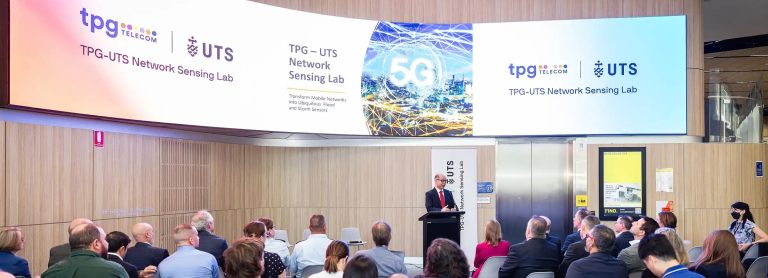Sensing for Disasters Solutions
Integrated Sensing and Communication (ISAC) Technology for Disaster Monitoring
This fundamental research project applies a new technique for ISAC in environmental sensing and disaster monitoring. A new communication waveform developed by the UNSW team in 2021, along with new transceiver architectures, are proposed for enabling existing communication infrastructure (mobile base stations or LEO satellites) to perform accurate disaster detection and monitoring. This waveform, called Orthogonal Delay–Doppler Division Multiplexing (ODDM) modulation, is a variation of the standard Orthogonal Frequency Division Multiplexing modulation, was originally proposed for future communication networks as it supports fast time varying channels and high data rates, ideal for future mobile networks like 6G and beyond.
Novelty and innovation
- Due to its proven performance for fast time-varying channels, ODDM is well-suited for high-speed vehicular networks.
- ODDM may reduce interference and out-of-band emissions compared to standard techniques, making it more robust and less susceptible to movement.
Building on this foundational work, the team proposes to use this new waveform for environmental sensing, where existing wireless communications infrastructure and radio signals are utilised to sense changes in the environment, for rainfall, water level and bushfire detection. This approach, known as Integrated Sensing and Communications (ISAC), is anticipated to achieve high sensing resolution and accuracy in practice, as demonstrated in the team’s theoretical research.
Progress
Stage 1: Integrated Sensing and Communication (ISAC)
Development of a new waveform, enabling general sensing (object detection) and communication. The team has demonstrated the robustness of the new ODDM waveform, and confirmed that it is capable of supporting simultaneous communication and sensing.
Stage 2: ISAC for disaster monitoring
At the final project update, scenarios and testing outcomes for disaster monitoring will be presented. Preliminary studies have already commenced, exploring the use of ISAC for fire detection on cargo ships using radio frequency signals.
Project lead:
Professor Jinhong Yuan – University of New South Wales
Funding:
$40,000
Type of project:
Fundamental research
Project duration:
12 months
Project status:
In progress
Final presentation:
December 2025
Frequently Asked Questions (FAQ)
The existing ISAC approaches work with the standard ODFM waveform.
The Integrated Sensing and Communication (ISAC) Technology for Disaster Monitoring project proposes an entirely new communication ODDM waveform which supports fast time varying channels and high data rates, ideal for future mobile networks like 6G and beyond. The research is still in its infancy, but given early work it has the potential to enhance accuracy and robustness for ISAC technology.
It has been tested on 5 Ghz, but it is anticipated that similar results can be reproduced for other frequency bands as well.
As ODDM/OTFS research remains in its early stages, further investigation is required before it can be considered for adoption in formal standards. With 6G standardisation efforts already underway, the timeframe for inclusion may be quite limited. Nevertheless, the University of New South Wales is collaborating with network operators to explore and propose ODDM/OTFS technologies for potential integration into future 6G systems.
Subscribe to our mailing list and follow us on LinkedIn for the latest updates.
Find out more
To stay updated on this exciting project, subscribe to our mailing list and follow us on LinkedIn.
For enquiries:
- Media Enquiries: communications@connectivityinnovationnetwork.com
- General Enquiries: admin@connectivityinnovationnetwork.com



